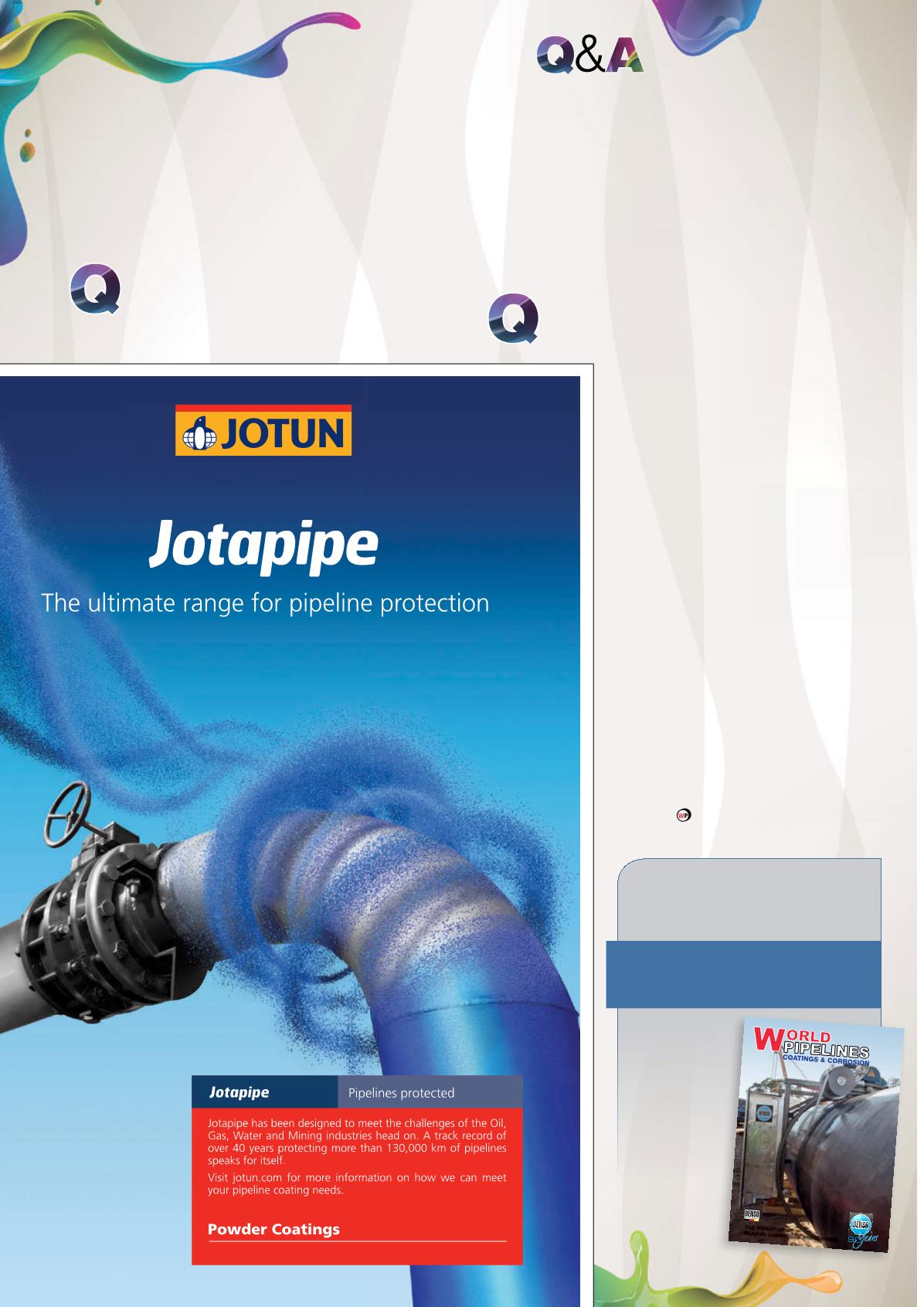
COATINGS
such as the NACE International Coating Inspector Programme (CIP)
and SSPC’s Protective Coatings Inspector Programme (PCI).
The longer the service-life requirements for the coating system,
the greater the difficulty in accessing the coating for maintenance,
or the greater the consequence of coatings failures, the more
stringent the need for high quality surface preparation and its
verification.
Why do companies carry out coating
adhesion tests?
One measure of a properly installed coating system
is the verification of its adhesive strength. As mentioned above,
surface cleanliness increases bond strength for a given coating.
A high adhesive pull strength, typically, and with all other things
being equal, is a fair indicator of a properly applied coating. Note
that it is not the only indicator. For instance, the same coating
applied to steel may have one pull strength, and applied to
concrete, may have a different and lower pull strength. Concrete
will fail in tension at about 10% of its compressive strength, so
saying a coating is not as good on concrete as steel is not a
completely accurate statement.
What role do defect assessment
tools play in coatings integrity?
Defect assessment tools provide a way to
verify that the installed coating systems
meet the design specifications. Many of
the pipelines in the US are buried, which
means that accessing them to perform
maintenance on the coating system is very
expensive. Emphasis on “getting it right
the first time” is, and should be, high on
the list for new construction. Coating film
thickness is a key attribute to the service
life of the coating, and should be verified
in the plant (for main sections) and field-
verified (at the joints).
Additionally, the coatings must also be
holiday-free. That is, the coating system
should not have visible or even invisible
pinholes, nor should it be damaged during
installation and handling. Determination of
holidays can be accomplished by using a
holiday detector in the field. The detector
must be properly adjusted for the coating
thickness, and must be properly used by
the inspector in order to ensure that there
are no pinholes in the coating through
which corrosive elements can reach the
substrate.
THE INVENTOR OF
PASSIVE CORROSION PREVENTION
World
PiPelines
CoATinGs&Corrosion
2012
WP_C&C2012_OFC.indd 1
02/10/2012 12:51
issue,
in print
October
2014
For more on coatings,
look out for our special
COATINGS
& CORROSION


